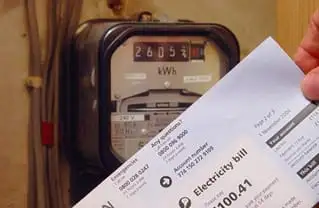New pricing system for green electricity
BEIJING, CHINA - Senior officials from the government's top pricing and tax decision-making group said China has come up with a pricing system for electricity generated by renewable energy.
The government will also raise the price of electricity for domestic customers from the start of next year by a small margin.
The new electricity pricing mechanism will accompany the country's first law on renewable energy, which will come in at the beginning of next year.
It will set the price at which generators of electricity can sell their power to grid companies.
This will be different from region to region due to differences in economic development, and will be within a range of 0.49 yuan to 0.69 yuan (0.06 US cents to 0.085 US cents) per kilowatt-hour (kwh), said Wang Zhongying, director of the centre for renewable energy development under the National Development and Reform Commission (NDRC).
The NDRC unit is responsible for making regulations for the renewable energy law.
Wang was speaking at the International Forum on Tax and Fiscal Policies to Promote Sustainable Development, hosted by the Energy Foundation recently in Beijing.
Keynote speakers at the forum also included Vice-Minister of Finance Lou Jiwei and Vice-Minster of the NDRC Zhang Guobao, who said the government is considering levying a windfall tax on the country's top two oil companies, Sinopec and PetroChina. This could happen if crude prices remain high.
Zhang also said further tax incentives should be given to hydro and wind power producers.
Wang said the price-setting body at the NDRC is now collecting feedback about the proposal.
He said the additional money that it costs to produce renewable- energy electricity will be paid for by customers.
"There will be a slight (electricity) tariff increase next year, which will be less than 0.01 yuan (0.0012 US cents)," Wang Fengchun, deputy director-general of the research department under the environmental protection & resources conservation committee of the National People's Congress, told China Daily.
However, poorer people, residents in the Tibet Autonomous Region, cities and counties powered by their separate electricity supply network (off the national grid), as well as the agricultural sector, will not pay the additional charges, Wang Zhongying said.
According to the pricing proposal, the Minister of Finance will establish a special account and return the extra money to the country's grid companies, including the State Grid Corp of China and China Southern Power Grid, Wang Zhongying said. This will offset the higher cost of buying green electricity.
Wang Fengchun said there have been some complaints from the electricity sector that the new tariff for renewable energies is still too low, but Wang Zhongying said no big setbacks exist to prevent the new pricing system from taking effect next year.
Remarks from senior officials yesterday also showed a government determination to increase taxes on State-owned resources, such as oil and coal, to better reflect their value.
"The country's big energy companies, such as Sinopec and PetroChina, are making windfall profits from oil resources while world crude prices remain strong," Lou told the forum.
The Ministry of Finance will levy a special tax on both oil companies if crude prices stay above US$40 per barrel, since the operating costs of oil exploitation is only US$12 per barrel on average, Lou said.
He refused to comment when asked about the timetable and amount of the oil tax, but said Sinopec and PetroChina have reached an agreement with the ministry about the new tax.
The ministry is also considering charging the country's State-owned coal miners for mining rights, but the proposal has met strong objection from the China Coal Industry Association, which represents the interests of State-owned coal companies, Lou said.
The NDRC's Zhang yesterday said value-added tax for wind power generators is still too high.
China has vowed to use renewable energy to supply 15 per cent of the nation's electricity needs by 2020, compared with the current level of 7 per cent.
Related News

Egypt, Eni ink MoU on hydrogen production projects
CAIRO - The Egyptian Electricity Holding Company (EEHC) and the Egyptian Natural Gas Holding Company (EGAS) signed a memorandum of understanding (MoU) with the Italian energy giant Eni to assess the technical and commercial feasibility of green and blue hydrogen production projects in Egypt.
Under the MoU, a study will be conducted to assess joint projects for the production of green hydrogen using electricity generated from renewable energy and blue hydrogen using the storage of CO2 in depleted natural gas fields, according to a statement by the Ministry of Petroleum on Thursday.
The study will also estimate the potential local market consumption…




